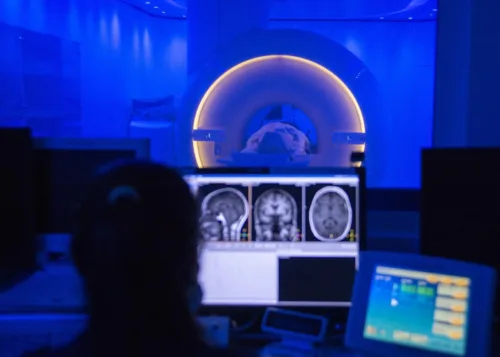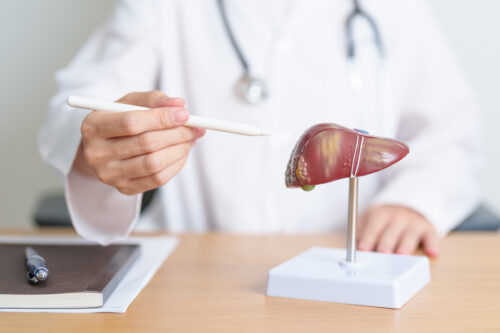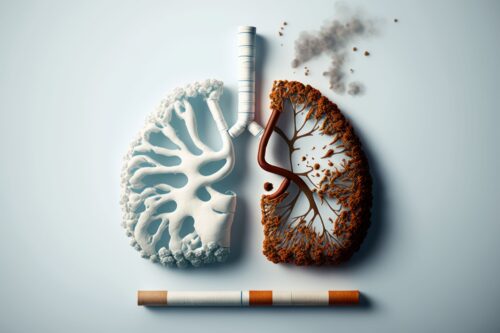Studies have found that temperature is closely related to the risk of coronary heart disease. For every 1°C rise in temperature, the mortality risk associated with coronary heart disease and other cardiovascular diseases increases by approximately 2.1%. High temperatures in summer not only cause heatstroke but also increase the burden on the heart, trigger the symptoms of coronary heart disease and may even induce acute heart attacks.
This article will introduce the causes, common symptoms and preventive methods of coronary heart disease to help you protect your heart and stay away from the risks of heart disease.
What is Coronary Artery Disease (Coronary Heart Disease)?
Coronary arteries are crown-shaped blood vessels surrounding the heart, which deliver oxygen and nutrients to the heart muscle. When these blood vessels narrow or harden due to the accumulation of fat or cholesterol, blood flow to the heart is reduced, damaging the heart muscle and resulting in coronary heart disease.
Coronary heart disease can easily cause angina and myocardial infarction. If a large area of the heart muscle is damaged, the heartbeat may become irregular or even stop completely, leading to death. Coronary heart disease is one of the most common heart diseases worldwide and is also the main cause of sudden death among many young people.
Why Does Hot Weather Trigger Coronary Heart Disease?
Many people believe that coronary heart disease mainly occurs in cold winter, but in fact, hot weather also increases the symptoms of coronary heart disease and the risk of heart disease.
1. Sudden Changes in Temperature Cause Intense Contraction of Blood Vessels
In summer, the temperature difference between indoor and outdoor environments is large. Frequently going in and out of air-conditioned places puts stress on the cardiovascular system. Sudden temperature changes cause repeated contraction and dilation of blood vessels, which can easily lead to blockage or thrombosis.
For example, going indoors from a hot street, or repeatedly entering environments with different temperatures in a short time can make it difficult for the body to adapt, causing blood pressure to rise and increasing the burden on the heart. If the heart cannot cope with this pressure, acute cardiovascular diseases may occur.
To protect your heart, avoid frequent transitions between environments with large temperature differences. Allow your body time to adjust; if you need to go out, prepare for temperature changes in advance, such as staying warm or cooling down to reduce vascular stress.
2. High Temperatures Lead to Blood Thickening and Thrombosis
High temperatures cause excessive sweating. If water and electrolytes are not replenished in time, dehydration may occur, blood becomes thicker and the risk of thrombosis increases, thereby increasing the likelihood of myocardial infarction.
Excessive sweating may lead to the following reactions:
- Rapid loss of water and electrolytes
- Blood becomes thicker and circulation slows down
- Increased accumulation of substances in the blood
- The heart needs more effort to pump blood to maintain circulation
In addition, imbalances in electrolytes (such as potassium, calcium and magnesium) directly affect the normal contraction of heart muscles and heart rhythms and may cause arrhythmia.
Who Is at High Risk of Coronary Heart Disease?
The following people have a higher risk of coronary heart disease:
- People with high blood pressure Long-term high blood pressure narrows and hardens blood vessels, increasing the burden on the heart and accelerating vascular sclerosis, which may trigger coronary heart disease.
- People with diabetes High blood sugar damages the inner walls of blood vessels, promoting vascular sclerosis and affecting blood supply to the heart. Some diabetic patients may not feel typical chest pain due to nerve damage, and their condition may be more serious when discovered.
- People with high blood lipids or cholesterol Excess cholesterol accumulates on the vessel walls, leading to vessel narrowing and reduced blood flow, increasing the risk of coronary heart disease.
- Overweight or obese individuals Excess body fat affects vascular health and increases the risk of diabetes, hypertension and high cholesterol.
- Smokers Nicotine constricts blood vessels and raises cholesterol levels, making blood vessels more prone to hardening. Smokers have a much higher risk of coronary heart disease than non-smokers.
- People who drink heavily over long periods Alcohol contains a large amount of sugar and starch. Long-term drinking easily leads to diabetes and elevated cholesterol, indirectly increasing cardiovascular disease risk.
- People under high stress or prolonged mental tension Long-term emotional tension raises blood pressure and increases the burden on the heart. Some people may experience chest tightness or palpitations, which are similar to coronary heart disease symptoms and should be diagnosed early.
- Individuals lacking physical exercise Lack of exercise accelerates vascular aging, leads to weight gain and makes it difficult to control blood sugar and blood pressure, thereby increasing the risk of coronary heart disease. Regular exercise helps improve cardiovascular function.
- People with high salt, sugar or fat diets High salt intake easily leads to high blood pressure; high sugar increases the risk of diabetes; high fat makes blood vessels more prone to blockage.
- People with a family history If parents or siblings have had coronary heart disease, the risk is higher. Those with a family history of diabetes or high blood pressure should also stay alert.
- Men and postmenopausal women Men tend to develop cardiovascular problems earlier. Women are protected by hormones before menopause, but their risk increases significantly after menopause and approaches that of men.
- Elderly The older you are, the less elastic your blood vessels become and the easier they harden. Regular heart health check-ups are recommended.
 What Are the Symptoms of Coronary Heart Disease?
What Are the Symptoms of Coronary Heart Disease?
Coronary heart disease develops slowly over many years. About 10% of patients have no obvious symptoms or warning signs before onset. Shortness of breath or chest tightness during exercise is often overlooked but may be a warning sign of blocked heart vessels. In severe cases, patients may experience dizziness, angina (chest pain) or sudden heart attack.
Understanding the common symptoms of coronary heart disease helps detect the danger early and seize treatment opportunities.
| Symptom | Description |
|---|---|
| Angina | Pain or pressure in the chest, often accompanied by shortness of breath or difficulty breathing, caused by restricted blood supply to the heart. It usually occurs when walking, during emotional stress, after meals or in cold weather. People with angina have a higher risk of heart attack. |
| Myocardial infarction | Severe chest pain in the center of the chest, similar to severe indigestion. Symptoms may appear suddenly or gradually worsen. |
| Arrhythmia | Irregular heartbeat. Patients may feel palpitations (rapid or fluttering heartbeats). Although common, palpitations may be a sign of coronary heart disease. |
| Heart failure | Coronary heart disease gradually weakens heart function and leads to heart failure. Patients feel fatigued, short of breath and may develop swelling in the ankles and legs, indicating the heart cannot pump blood effectively. |
Studies show that even mild chest pain increases the risk of heart disease by 21% within the next 30 years, and severe chest pain increases the risk by up to 83%.
 3 Tips to Prevent Heart Disease in Summer
3 Tips to Prevent Heart Disease in Summer
Proper preventive measures can effectively reduce the risk of coronary heart disease. The following three methods help maintain cardiovascular health in hot weather:
1. Replenish Water and Electrolytes
Sweating heavily in high temperatures makes blood thicker and increases the burden on the heart. You should actively drink water even if you are not thirsty. In summer, daily drinking volume for adults can be calculated by multiplying body weight by 40 (ml). For example, a person weighing 50 kg should take at least about 2 liters per day.
Drink water in separate intervals — 200–300 ml each time, not more than 1 liter per hour. Avoid only drinking water when you feel thirsty. After heavy sweating, in addition to water, you may replenish drinks containing small amounts of electrolytes (such as sports drinks or lightly salted water).
2. Avoid Intense Activity and Temperature Stimulation
Avoid outdoor activities during noon when the heat is strongest. Before entering air-conditioned rooms from a hot environment, first stand in the shade and wipe off sweat, allowing the body to cool down slightly before entry. Inside air-conditioned rooms, prepare a light jacket or scarf to reduce the temperature impact on the body.
3. Maintain Indoor Temperature and Ventilation
Indoor temperature should be kept between 25–27°C and not below 20°C. Open windows in air-conditioned rooms 2–3 times a day for 10–15 minutes each time to ensure air circulation. Use air conditioners and fans together for a more even distribution of cool air and energy saving.
Methods of Diagnosing Coronary Heart Disease
Early diagnosis is crucial for the effective treatment of coronary heart disease. The following are common examination methods to assess heart function and blood vessel condition:
| Diagnostic Method | Main Purpose | Advantages and Notes |
|---|---|---|
| Electrocardiogram (ECG) | Measures electrical activity of the heart, helping detect heart rhythm and structural problems. Suitable for initial screening. | Quick, painless, radiation-free and non-invasive. If there are no obvious symptoms, results may appear normal; abnormalities are easier to detect only when symptoms or discomfort are present. |
| Echocardiogram | Uses sound waves to examine heart size, movement and valve condition | Suitable for preliminary assessment of heart structure and function. Quick, painless, radiation-free and non-invasive. Test lasts about 20–30 minutes. |
| Coronary CT Angiography (CTCA) | Clearly shows whether there is narrowing or blockage in coronary arteries | Suitable for screening suspected coronary heart disease. Fast and painless, non-invasive. |
| Cardiac MRI | Uses magnetic fields to create images and assess heart tissues, function and blood flow. | Suitable for screening suspected coronary heart disease. Effectively evaluates heart structure and function in detail. Radiation-free, painless and non-invasive. |
Regular heart examinations and early detection with appropriate treatment are important for maintaining cardiovascular health.
Common Questions (FAQs)
Q1: Why does summer increase the risk of coronary heart disease? High temperatures cause heavy sweating, easily leading to dehydration and electrolyte imbalance, which makes blood thicker and increases the risk of thrombosis. In addition, alternating hot and cold environments stimulate contraction and dilation of blood vessels, putting pressure on the cardiovascular system.
Q2: Who are high-risk individuals for coronary heart disease?
High-risk individuals include older adults (men over 45 and women over 55), people with the “three highs” (high blood pressure, high blood sugar and high cholesterol), smokers, obese individuals and those with a family history of heart disease.
Q3: What are the main symptoms of coronary heart disease?
Typical symptoms include angina (pressure feeling in the chest), shortness of breath, fatigue, palpitations and dizziness. It is important to note that some patients may have no obvious symptoms. If these symptoms occur, especially sudden and worsening chest pain, seek medical attention immediately.
Q4: How can coronary heart disease be prevented during hot weather?
Prevention methods include:
- Actively replenishing sufficient water and electrolytes, and drinking regularly even when not thirsty;
- Avoiding outdoor activities during noon when temperatures are high and minimizing transitions between hot and cold environments;
- Keeping indoor temperature between 25–27°C and ventilating regularly.
Q5: What are the diagnostic methods for coronary heart disease?
Common diagnostic methods include electrocardiograms, echocardiograms, CT coronary angiography and cardiac MRI. Regular examinations help detect problems early and allow timely treatment.
*This article is for reference only. If you have any questions, please consult a professional doctor.
References:
1. 智友站. 冠心病
2. 關心你的心. 熱天運動引發心臟危機 飲水太多太少都傷「心」
3. 衛生防護中心. 心臟病
4. American Heart Association. Chest pain, shortness of breath linked to long-term risk of heart trouble
5. Liu, Jingwen et al. Heat exposure and cardiovascular health outcomes: a systematic review and meta-analysis
6. U.S. Centers for Disease Control and Prevention. Heart Disease Facts
7. St. Teresa’s Hospital. 四檢查心臟病的方法













